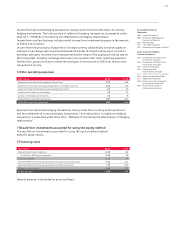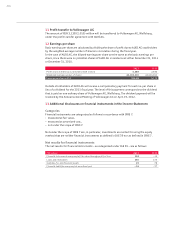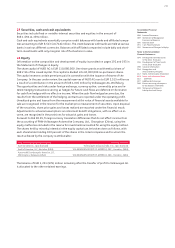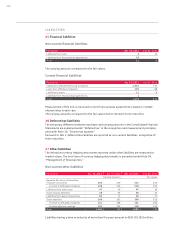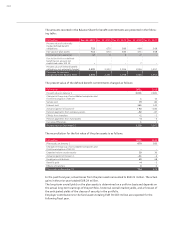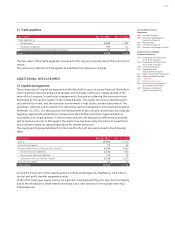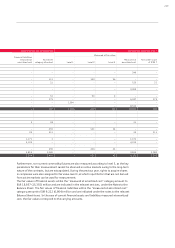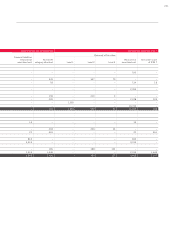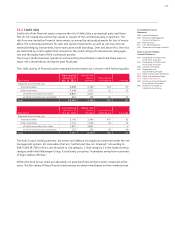Audi 2011 Annual Report Download - page 226
Download and view the complete annual report
Please find page 226 of the 2011 Audi annual report below. You can navigate through the pages in the report by either clicking on the pages listed below, or by using the keyword search tool below to find specific information within the annual report.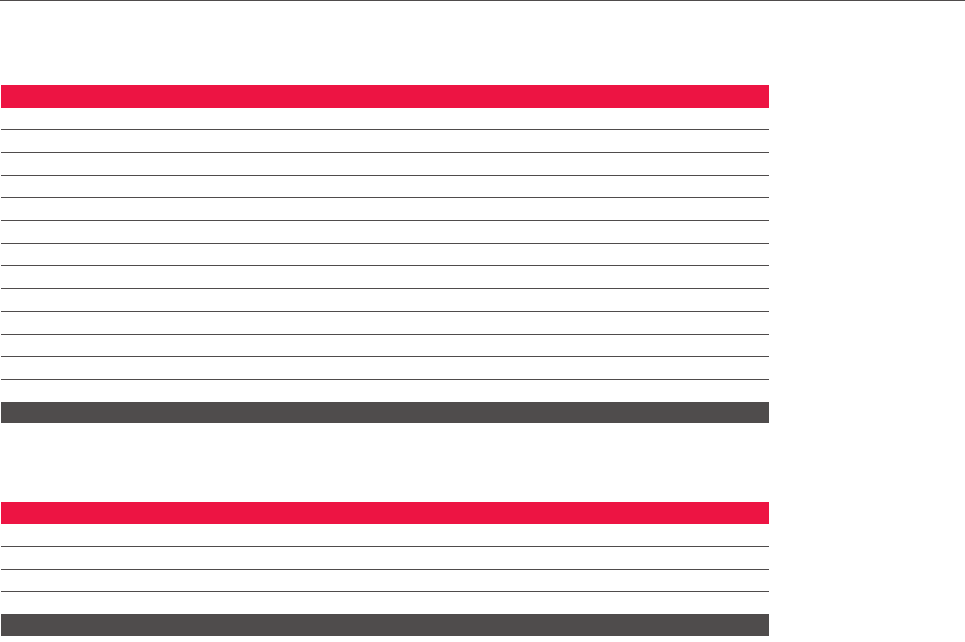
223
Consolidated Financial
Statements
188 Income Statement
189 Statement of Recognized
Income and Expense
190 Balance Sheet
191 Cash Flow Statement
192 Statement of Changes in Equity
Notes to the Consolidated
Financial Statements
194 Development of fixed assets
in the 2011 fiscal year
196 Development of fixed assets
in the 2010 fiscal year
198 General information
204 Recognition and
measurement principles
212 Notes to the Income Statement
218 Notes to the Balance Sheet
222 Liabilities
227 Additional disclosures
248 Events occurring subsequent
to the balance sheet date
249 Statement of Interests
held by the Audi Group
Current other liabilities
EUR million Dec. 31, 2011 Dec. 31, 2010
Liabilities from the transfer of profit 3,138 2,010
of which to affiliated companies 3,138 2,010
Advances received 685 544
of which from affiliated companies 864
of which from associated companies 76 112
Negative fair values of derivative financial instruments 461 291
of which to affiliated companies 435 188
Liabilities from other taxes 131 205
of which to affiliated companies 67 56
Social security liabilities 118 121
Liabilities from payroll accounting 1,104 742
Other liabilities 719 535
of which to affiliated companies 441 340
Total 6,355 4,447
The negative fair values of derivative financial instruments are composed as follows:
EUR million Dec. 31, 2011 Dec. 31, 2010
Cash flow hedges to hedge against
currency risks from future payment streams 871 389
commodity price risks from future payment streams (cash flow hedges) 10 0
Other derivative financial instruments 125 132
Negative fair values of derivative financial instruments 1,005 521
28 Provisions for pensions
Provisions for pensions are created on the basis of plans to provide retirement, disability and
surviving dependant benefits. The benefit amounts are generally contingent on the length of
service and the remuneration of the employees.
Both defined contribution and defined benefit plans exist within the Audi Group for retirement
benefit arrangements. In the case of defined contribution plans, the Company pays contribu-
tions to public or private-sector pension plans on the basis of statutory or contractual require-
ments, or on a voluntary basis. Payment of these contributions releases the Company from any
other benefit obligations. Current contribution payments are reported as an expense for the year
in question. With regard to the Audi Group they total EUR 281 (269) million. Of this, contribu-
tions of EUR 268 (251) million were paid in Germany toward statutory pension insurance.
The retirement benefit systems are based predominantly on defined benefit plans, with a distinc-
tion being made between systems based on provisions and externally financed benefit systems.
The domestic and foreign benefit claims of those with entitlement to a pension from the company
pension scheme are calculated in accordance with IAS 19 (Employee Benefits) on the basis of
the projected unit credit method. This measures future obligations on the basis of the pro rata
benefit entitlements acquired as of the balance sheet date. For purposes of measurement, trend
assumptions are used for the relevant variables affecting the level of benefits.
The retirement benefit scheme within the Audi Group was evolved into a pension fund model in
Germany on January 1, 2001. The retirement benefit commitments for this model are also clas-
sified as defined benefits in accordance with the requirements of IAS 19. The remuneration-
based annual cost of providing employee benefits is invested in mutual funds on a fiduciary
basis by Volkswagen Pension Trust e.V., Wolfsburg. This model offers employees the opportunity
of increasing their pension entitlements, while providing full risk coverage. As the mutual fund
units administered on a fiduciary basis satisfy the requirements of IAS 19 as plan assets, these
funds were offset against the derived retirement benefit obligations.


